What is penetrating damp?
Penetrating damp is the process of dampness penetrating through the wall from the outside caused by external defects of the building.
Often misdiagnosed as rising damp, penetrating damp can lead to further, more serious issues, such as wood rot, increased heat loss, frost damage into masonry and unsightly water damage on both the outside and inside of the property.
Penetrating damp can affect any type of property, however, old properties that have had no or little property maintenance are more prone to water penetration. Modern properties can also suffer from penetrating dampness if the design and workmanship of the property have defected, resulting in having damp in walls.
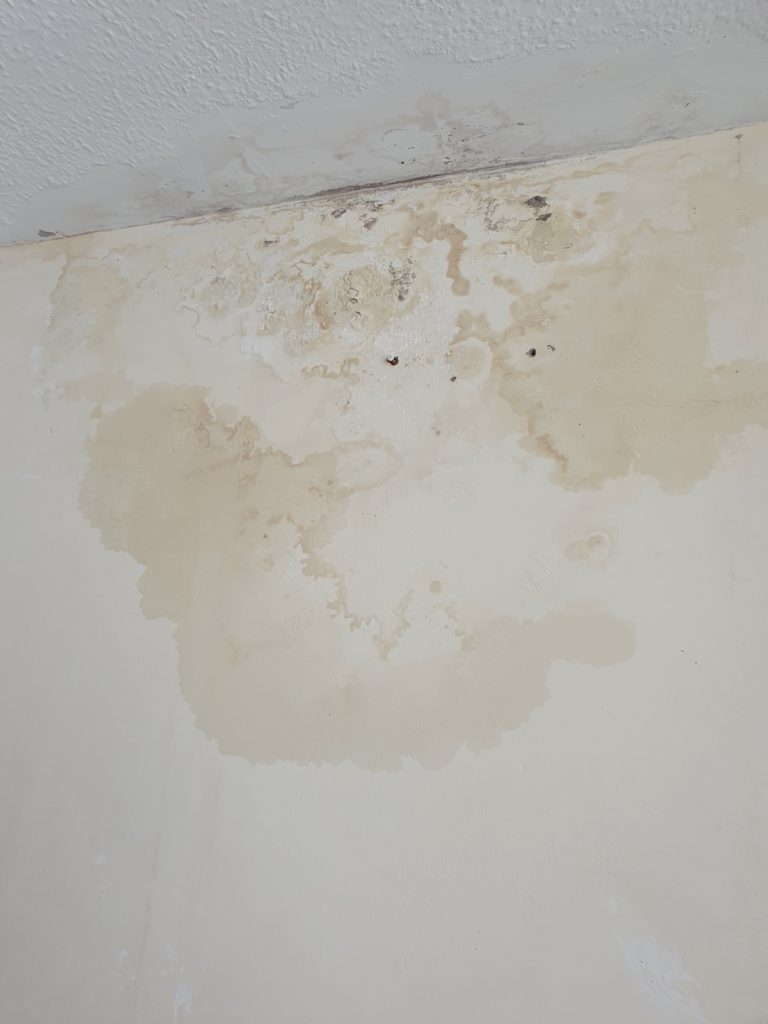
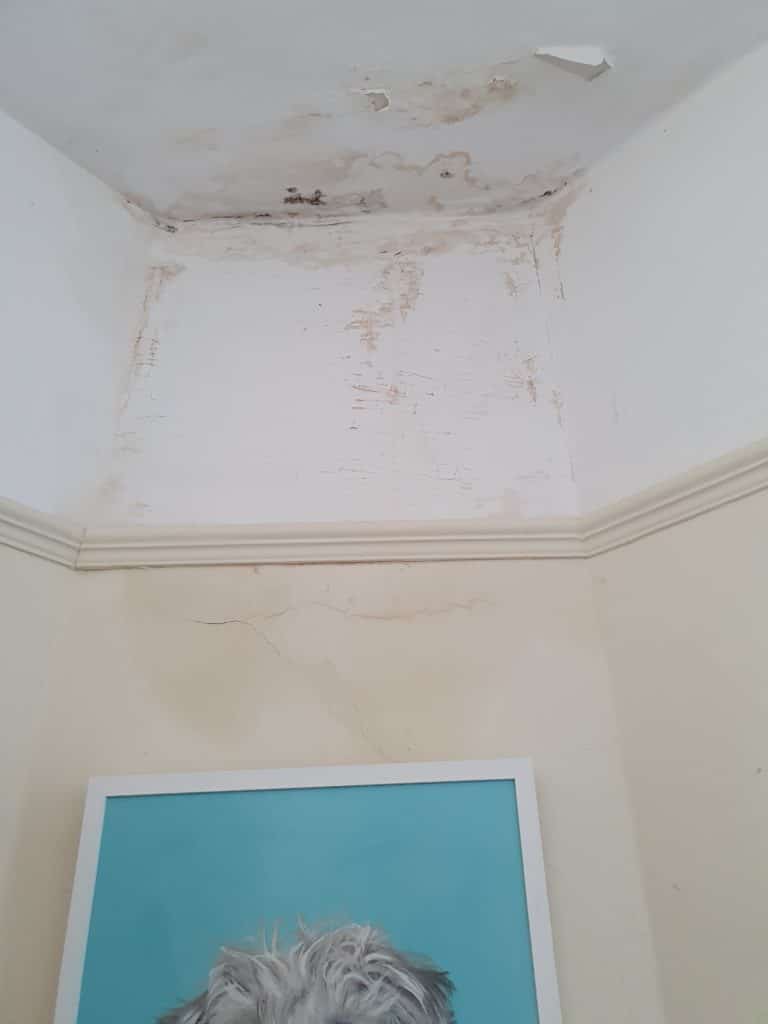
What is water ingress?
Water ingress is simply the process of water entering its way into a property.
There are a number of potential problems that can occur as a result of water entering the building. There is immediate damage from water entering the building in the form of damp, but, there are further problems that can also occur in the future.
Future problems are fungal decay, damage to walls and potential health problems from mould. It is always best to deal with the issue of dampness as quickly as possible by contacting a local damp proofing specialist.
How to identify penetrating damp?
Any watermarks that appear on the walls or ceilings will indicate that there is a penetrating damp problem. When the surveyor checks these areas of the building, these will invariably show high moisture readings.
Damp patches will occur on the external and adjacent internal walls of your property if water is allowed to gain entry as a result of prolonged periods of rainfall and external building defects. This may also result in condensation developing in areas of the property where there are damp, cold areas. Water droplets may also be visible if the damp problem has become a serious issue. Residual salt contamination may also be a problem where penetrating dampness has occurred.
Having visible damp patches and a damp musty smell is not notice for any homeowner, so it is something that needs to be rectified as soon as possible. The visible signs and musty smells are not the only issues associated with penetrating damp. Dry rot can also occur if the damp problem is not sorted in a sufficient amount of time.
The penetrating damp symptoms that you need to look for are as follows:
- Damaged plaster: Plaster will show signs of wear and tear when affected by penetrating damp. The reason for this occurring is that the moisture damages the quality of the plaster.
- Localised dampness: Penetrating damp will cause patches of localised damp and will occur at different areas of the property. These damp patches may not dry, sometimes even after the defect has been rectified, this is due to residual salt contamination.
- Timber floors that are affected by penetrating damp can lead to signs of wood rotting issues which can cause serious damage to the building’s infrastructure
- Damage to the internal decoration of the property: If the inner walls of the property and the decorations that are associated have become discoloured or damp, then it is more than likely that your property is suffering from penetrating damp.
Signs of penetrating damp affecting external areas of the building
Property owners need to be aware that penetrating damp can affect both the internal and external areas of the property.
The symptoms of external penetrating damp are as follows;
- Moss growth on the outer walls of the building: Moss and algae start to grow on walls when there are high levels of moisture. These organisms are drawn to damp areas and can spread quickly if treatment is not carried out quickly. This will cause the brickwork to deteriorate over a long period of time and is not aesthetically pleasing for any homeowner
- Damaged brickwork and defective brickwork pointing: The most common sign of penetrating damp is having damaged brickwork and poor defective pointing on the external walls of the property. This is sometimes caused by frost damage. During frosty conditions, the moisture freezes and then expands. If the moisture has penetrated its way through into the brickwork, then the water will expand, which will then cause issues of cracks and spalling within the walls.
What areas are most affected by penetrating damp?
Properties that have been built with solid walls are the most likely to suffer from penetrating damp, compared to those that have cavity walls.
Having cavity wall construction provides some protection against moisture penetration. This is due to cavity walls providing an air gap between the internal and external walls, meaning that no moisture can easily gain access to the inner walls of the building.
Property owners should be aware that this does not mean that having cavity walls makes you exempt from penetrating damp issues. There can be problems from cavity wall insulation where the walls can become blocked, which then allows water access to the inner wall, even though there is an air gap that usually prevents this from occurring.
If there is an issue with the outer wall of the cavity, then this will allow moisture to pass through to the inner wall. This could then cause damage to the insulation of the cavity. Having damp insulation transfers moisture to the inner walls of the building.
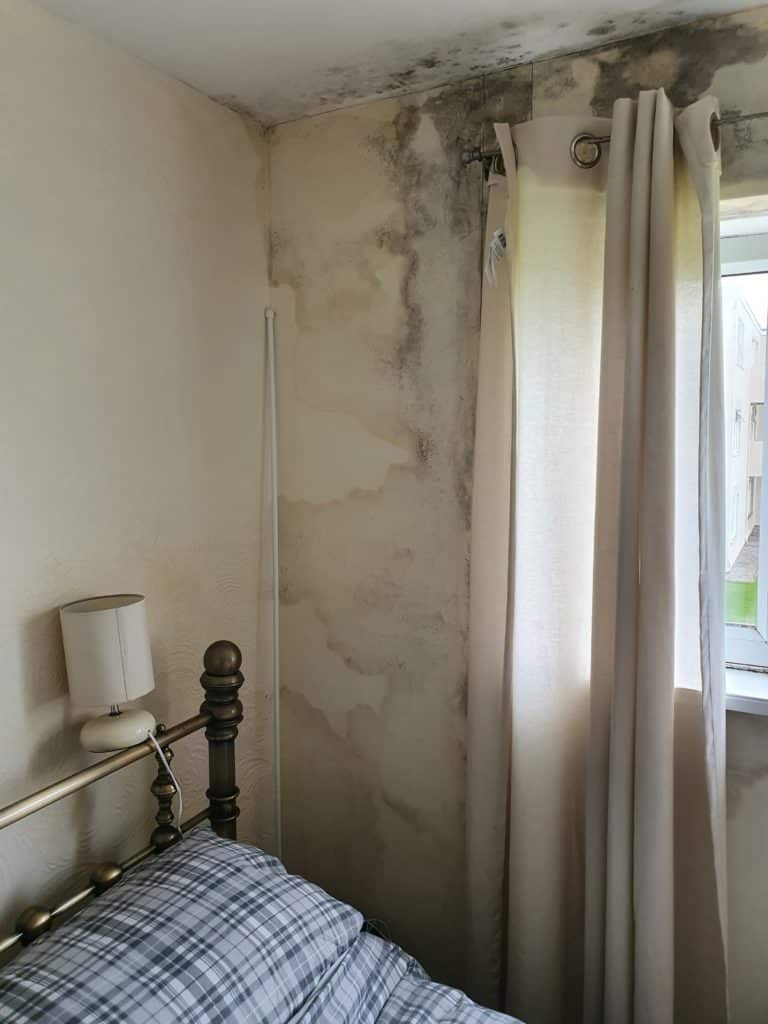
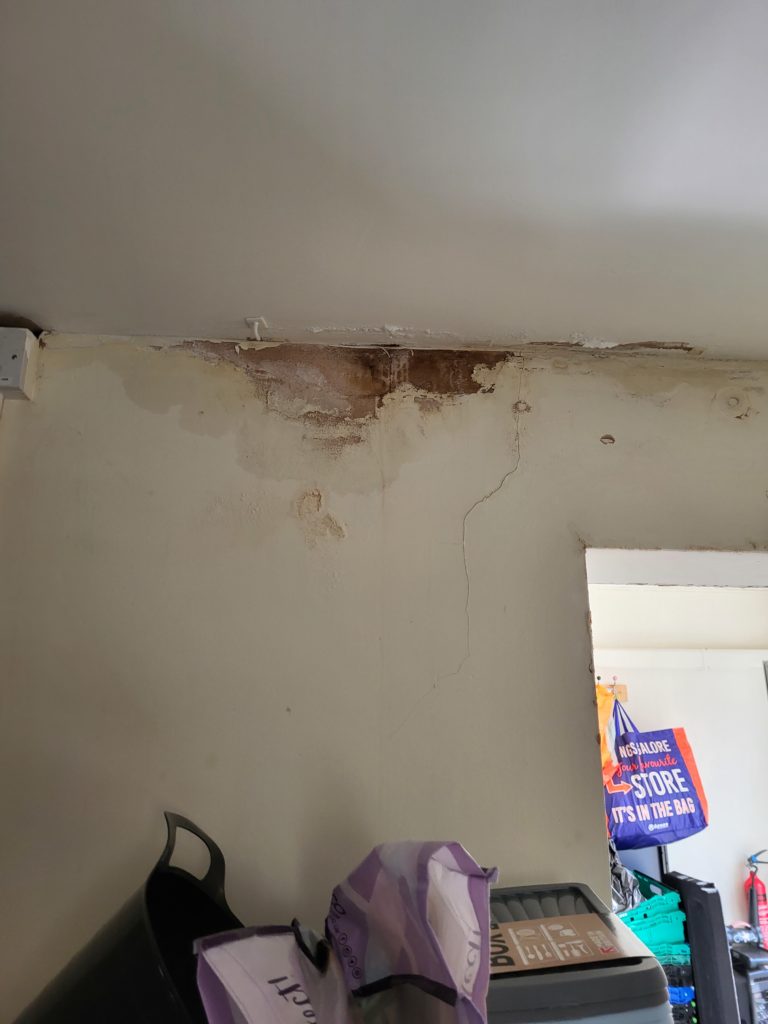
Causes of penetrating damp
The causes behind a penetrating damp issue tend to be down to what is known as building defects and can be wide and varied.
Some of the most common causes of penetrating damp found in the UK are;
Damaged or faulty rainwater goods
One of the most common causes of penetrating damp is rainwater goods, that in some way or another, are defective and no longer functioning as they should. Rainwater goods, in layman terms, is gutters and downpipes. It has been estimates that an incredible 1 in 5 houses is the victim of rainwater goods that are defective.
Most guttering and downpipes that are installed on modern properties nowadays tend to be made of PVC, as opposed to the more traditional, cast iron. It is still very common to find cast iron rainwater goods still in use on older properties.
Iron, although aesthetically pleasing, has a major disadvantage though over PVC. The harsh reality is that iron, no matter how thorough the maintenance routine is, will be susceptible to corrosion from exposure to the elements.
Through our experience, we often find that issues tend to occur on the back of downpipes made from cast iron, as it is often the back that is neglected, as it is hard to maintain whilst the front may benefit from regular maintenance.
Gutters fail predominantly as a result of blockages. Any blockages in the gutters will cause issues, especially in periods where there is heavy rainfall as they will not be able to cope with the volume of water and, as a result, will leak or overflow. This, in turn, will then lead to the external walls beneath the gutters potentially becoming saturated with water.
Common forms of blockages include leaves, moss and other various forms of foliage, all of which can be easily removed as part of a regular maintenance routine.
Defects with brickwork
If the brickwork is not kept in tip-top condition, it can become a cause of penetrating damp issues. If bricks become spalled and the pointing has failed, the brickwork loses its ability to withstand the elements and can allow moisture to penetrate through to the internal walls of the property.
This problem will only increase the longer the brickwork is left in that condition. When it is apparent that a property has damaged mortar joints and spalled brickwork, repair work should be carried out along with repointing as necessary.
Porous brickwork
As bricks age, their ability to defend a property from the elements, such as rain, becomes less and, as such, they can allow penetrating damp issues to rise. Bricks can also become porous as a result of frost or actual physical damage. If a property has a pebbledash finish that has not been maintained, this could also lead to penetrating damp issues occurring.
If brickwork becomes porous, water can penetrate the brickwork and penetrate deeply through to the inside of the property.
The more the property is subjected to rainfall, the worse the problem will become, leading to unsightly damp patches appearing on internal walls, which will grow in size during periods of heavy rainfall, as more water penetrates.
Defects on the roof
The roof of a property can be a source of several defects that can lead to penetrating damp issues. Roof tiles and roof ridge tiles may be missing or damaged, which can lead to moisture penetrating the inside of the property.
The flashing around the chimney is also a common source of water ingress if it becomes damaged. As these potential issues are on the roof, they can sometimes be easily overlooked, as they may not be easy to spot.
Door and window frames
Gaps and cracks around the window and door frames are common faults, that if left, will lead to problems with damp further down the line. As part of routine maintenance on your property, these should be checked and, if necessary, a flexible frame sealant should be used to keep moisture at bay.
It is also worth looking underneath the window sill to check the condition of the ‘drip groove’. The function of the ‘drip groove’ is to prevent water from running from the sill onto the wall. If this is damaged, or not present at all, action should be taken.
Uneven ground levels
Where the external ground levels are higher than the internal floor levels, and are higher than the damp proof course, what is known as bridging can occur. As a result of bridging, any dampness contained within the soil against the wall penetrates through the wall.
With homeowners’ desire to improve their properties, they can inadvertently cause a penetrating damp problem in the process. A new driveway could unintentionally breach the level of the existing damp proof course and could also lead to misdiagnosis as a cause of rising damp.
Likewise, landscaping the garden and adding features such as large planters or raised flowerbeds may look attractive, but could also lead to problems with dampness.
To make things worse, with flowerbeds and planters, we tend to add more moisture to the soil as we water the plants. At below ground level, if the property has a basement or cellar by their nature, they are surrounded by damp earth and will undoubtedly suffer from damp issues unless properly waterproofed.
How to treat penetrating damp?
The most important step in penetrating damp treatment is establishing and rectifying the source of moisture/water ingress. It is more than likely that the cause of penetrating damp is down to property issues.
DIY tips for treating penetrating damp
There are ways of sorting the problem by yourself, and there are some DIY tips that can help stop penetrating damp from causing damage to your property. The key to getting rid of the penetrating damp issue is to identify the source of the problem.
As previously explained, penetrating damp is caused by damage to the external areas of the building. Below are the most common external defects and how using DIY can resolve the problem.
- Roof damage – If you have the knowledge and expertise, then the cracked or missing tiles will need to be replaced
- Damaged guttering and pipes – This is the most common cause of penetrating damp problems. It is a simple fix that can be carried out by yourself. Simply unblock the gutters and pipes, or if there is any damage, then it will need to be repaired and replaced
- Cracks in the render – When the render has become damaged, then this will allow water to pass through. These cracks will need to be patched using a sealant or a new render
- Damaged windows – If the windows have become damaged over time, then these will need to be replaced
- Porous bricks – It is normal for bricks to become damaged over a long period of time and prolonged exposure to the elements. It is important that when the bricks become porous, they are replaced, as these will allow moisture to penetrate through the walls
A common mistake from property owners is that they try to provide self-diagnosis and treatment for the damp problem. This can often lead to misdiagnosis and the wrong treatment being carried out, which not only does it cost a lot of money to fix the problem, but it will also cause further damage to the building. It is possible that the property may be being affected by more than one damp issue, so the appropriate treatment will be needed to get rid of all the damp problems.
Having a fully qualified damp surveyor to inspect the property will be able to diagnose and treat the problem, from a range of solutions we offer, to suit the needs of your particular property care problem.
Why should you protect your brickwork?
Brick walls are not normally waterproof, which means that they are vulnerable to the penetration of damp from outside. Even modern properties are still susceptible to damp, causing problems within the brickwork.
If the dampness is left untreated, then it can lead to damage within the property.
It is a well known fact that damp walls are not effective at keeping heat where it is needed most in the home. Thermal resistance levels in walls drop considerably as the wall becomes damper and damper.
According to the UK Met office, it rains on average in the UK, for 156 days a year. Therefore, protecting your property from penetrating dampness has to be a good thing.
Not all walls are easy to insulate, for example, single skin brick or stone. With these types of walls, traditional cavity wall insulation is not an option. External insulation is not only costly, but also not visually appealing and internal insulation may prove to be impractical.If you are seeing signs of penetrating damp or want to reduce the chances of it occurring in the future, then using a trustworthy product for waterproofing brickwork is vital. Visit our External Waterproofing page to find out more.

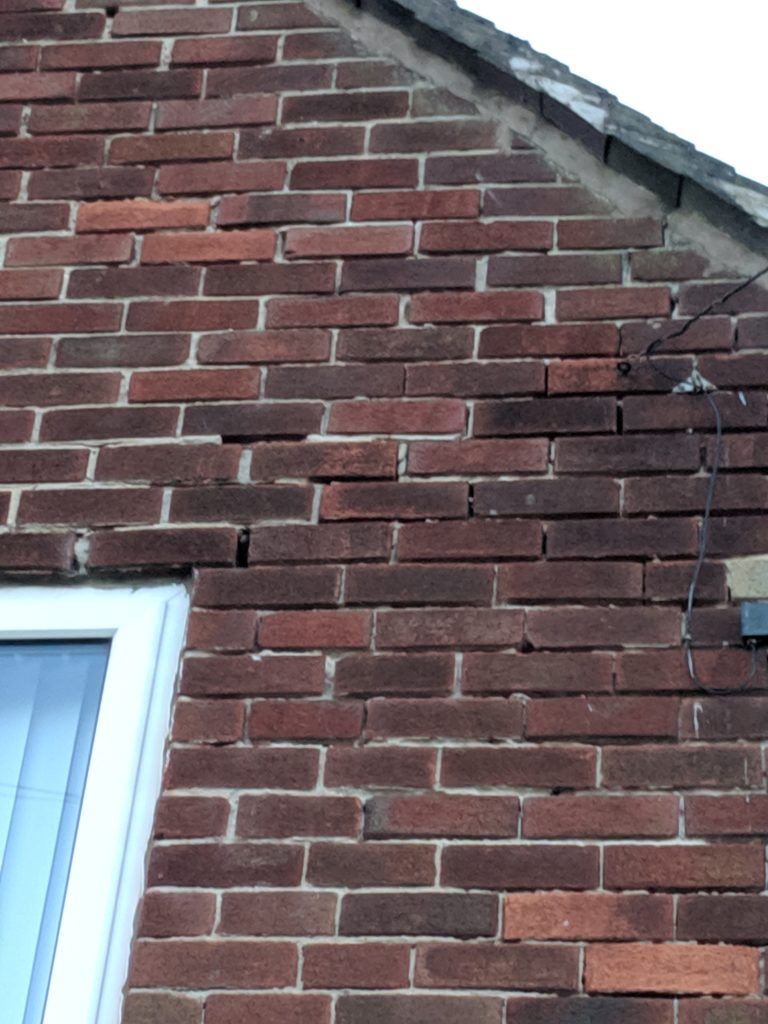
How to waterproof brickwork?
Finding the root of the cause of the penetrating damp problem is the first step to protecting your home. Before any brick waterproofing can be carried out, all cracks in walls, building faults, or if there is a faulty mortar, will first have to be fixed.
Once the structural integrity of the property has been sorted, then the masonry protection cream can be utilised.
When masonry gets wet, it gets cold, with cold walls meaning cold buildings, as heat escapes much more readily. A masonry protection cream, also known as a water repellent, is a colourless, breathable, water-repellent treatment for brick, concrete and stone walls.
It can be simply applied by adding the water repellent cream onto the untreated brick wall by using a brush or roller.
The cream is useful in that it stops penetrating damp without changing the appearance of the wall.
Is cavity wall insulation a cause of penetrating damp?
Cavity wall insulation is a popular method of improving the heat retention in your property, however, there is a risk that it can also contribute to internal dampness. The chances of cavity wall insulation causing internal dampness is is something you should be aware of. Damp can penetrate the property due to the following factors:
- Home is not in a sheltered position e.g. not covered by buildings or trees
- The external walls are poorly constructed or have been poorly maintained e.g. cracks in the brickwork
- The property is exposed to high intensity winds e.g. properties located on the west cost of the UK
- Porous brickwork or defective external rendering
If the cavity is fully insulated, then there is an increased chance of penetrating damp. This is due to moisture bridging the cavity from the insulation installed, which will then penetrate through the inner walls of the house.
Water ingress in a cellar or basement
Having water ingress problems in cellars and basements is a big concern for a property owners across the UK. Ordinarily, steps are taken at the design of a building to incorporate waterproofing of some form or another. Sometimes, though, especially with older properties, this may not have been done. As a result, other forms of retrospective waterproofing may be required.
Type C waterproofing systems are a popular waterproofing system that is used to safely drain any water out of the property to a convenient drain off point. The key components of a Type C waterproofing system include cavity drain membrane, perimeter drainage channels and sump pumps. Another method that might be used is the use of tanking the cellar, which involves using a waterproof slurry coating on the walls.
If you don’t have the necessary waterproofing system in place, or it has become damaged over time, then the property might experience water ingress problems at some point. We would always recommend contacting a waterproofing specialist who can deal with a damp basement.
Can penetrating damp cause health risks?
If the penetrating damp problem is sorted in adequate time, then you will not have to worry about the health effects of penetrating damp. As mentioned earlier, the main signs of penetrating damp are musty smells and stains on the walls which, although they look unpleasant, are not a risk to your health.
Living in damp conditions is not ideal and damp problems should be sorted out as soon as possible. If you are suffering from severe penetrating damp problems, then this can also lead to condensation issues occurring, with black mould being one of the symptoms.
Is penetrating damp covered by home insurance?
In a majority of cases, insurance companies will not cover penetrating damp. If the property defect has been causes by property maintenance, then this is generally not covered by home insurance. This is due to the fact that it is the responsibility of the property owner to keep the building maintained. If the roof has become damaged from wear and tear over time, then maintenance will need to be paid by the property owner. A definable event (which is classed as storm of fire) would allow the home owner to make a claim to the insurance company.
How is a penetrating damp survey carried out?
It is important to have a specialist to provide a damp survey on your property for any penetrating damp issues you may have. RTC surveyors are fully qualified by the Property Care Association. Our surveyors are CSTDB (Certificated Surveyor of Timber & Dampness in Buildings) qualified, meaning they are experts in providing solutions to all forms of damp issues that can be affecting your property.
Once the damp inspection has been carried out by the surveyor, they will provide a report on all the damp problems that were found during the survey. This will detail the causes of the issue and the treatments that are needed to rectify the penetrating damp problem.



